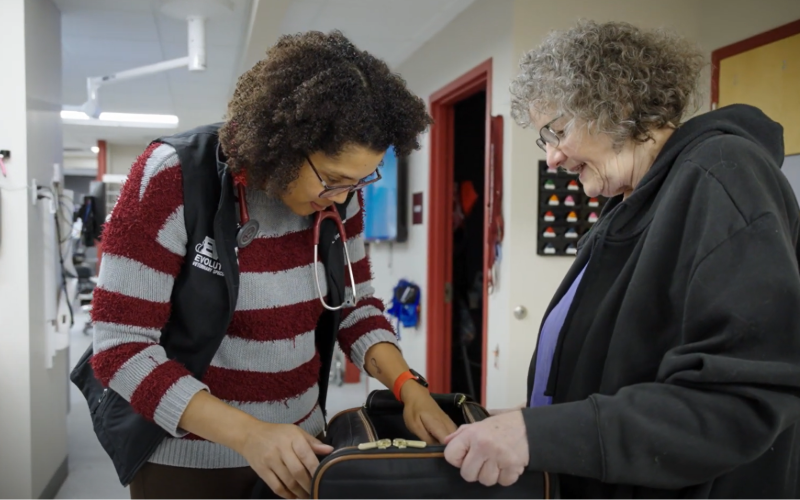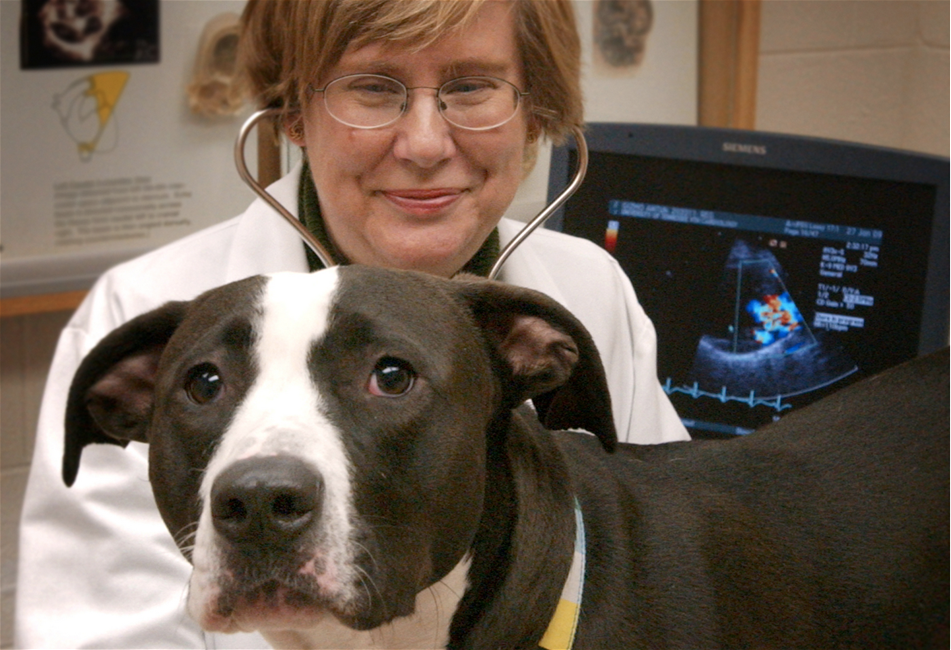What You Required to Find Out About Veterinary Providers: A Summary of Diagnostic Devices and Procedures
Veterinary solutions play a vital function in preserving the health of pets. Regular check-ups can reveal surprise wellness concerns early on. Different diagnostic tools and treatments, such as blood tests and imaging methods, supply crucial insights into a pet's health. Comprehending these methods is crucial for pet proprietors. What particular analysis treatments are most frequently utilized, and exactly how can they influence a family pet's therapy strategy?
Relevance of Normal Vet Exams
While lots of pet dog proprietors may take too lightly the significance of regular veterinary check-ups, these appointments are necessary for maintaining a pet's general health and wellness. Routine check outs to the vet permit very early detection of potential wellness concerns prior to they rise into serious troubles. Regular exams usually consist of vaccinations, which are very important for avoiding transmittable diseases that could badly impact a pet dog's wellness. In addition, these consultations provide a chance for vets to analyze the animal's weight, oral health and wellness, and general problem, making certain that the family pet is prospering. Throughout these visits, pet dog owners can additionally receive useful guidance on diet regimen, workout, and precautionary care tailored to their certain animal's demands.
Common Analysis Treatments in Vet Medicine
In veterinary medication, precise medical diagnosis is vital for efficient therapy. Typical diagnostic treatments consist of blood testing methods, advanced imaging technologies, and urinalysis, each playing a considerable role in determining health issues. Comprehending these techniques boosts the capability to offer appropriate take care of pet clients.
Blood Evaluating Techniques
Blood testing techniques work as essential analysis tools in veterinary medicine, making it possible for vets to analyze the health and wellness of pets precisely. These strategies include gathering blood samples to assess different components, such as red and white blood cells, platelets, and biochemical markers. Common examinations include total blood counts (CBC), which review general health and wellness and identify infections, and biochemical panels, which assess organ function and metabolic standing. Additionally, serological tests can identify details conditions through antibody discovery. Blood testing is minimally invasive and offers critical details that helps in diagnosing conditions, keeping an eye on health and wellness standing, and examining responses to treatments. In general, these techniques play an important role in making sure ideal look after family pets and animals alike.
Imaging Technologies Used
Analysis imaging modern technologies are essential tools in vet medicine, enhancing blood screening methods by giving visual understandings into a pet's internal frameworks. Usual imaging modalities consist of X-rays, which work for reviewing bone cracks and finding international items, and ultrasound, which permits for real-time visualization of soft tissues and body organs. Magnetic resonance imaging (MRI) provides thorough pictures of intricate physiological areas, especially in neurological analyses. Calculated tomography (CT) supplies cross-sectional images, boosting diagnostic accuracy for various conditions. Each of these modern technologies help veterinarians in identifying ailments, planning therapies, and checking healing. By integrating imaging technologies, veterinary specialists can better assess a pet's wellness and make educated decisions concerning their care.
Urinalysis and Diagnostics
Urinalysis offers as a critical analysis tool in veterinary medicine, giving valuable insights right into an animal's overall health and assisting in the discovery of various problems. This non-invasive treatment assesses pee examples to examine kidney function, hydration condition, and metabolic disorders. Common elements examined include details gravity, pH levels, glucose, proteins, and the visibility of blood or bacteria. Unusual searchings for can indicate problems such as urinary system system infections, diabetes mellitus, or kidney illness. To boost analysis accuracy, urinalysis is typically performed combined with other examinations, such as blood job and imaging researches. Early detection through urinalysis can bring about prompt treatments, enhancing the diagnosis for numerous veterinary patients. It is an important aspect of complete vet care.
Understanding Blood Examinations and Research Laboratory Evaluation
Comprehending blood examinations and research laboratory analysis is important in vet medication as it assists in diagnosing different wellness conditions in pets. Different kinds of blood examinations give necessary details concerning an animal's interior state, while analyzing lab results calls for careful factor to consider of various variables. This area will discover the types of blood examinations readily available and the relevance of their results.
Sorts Of Blood Examinations
Blood tests play an essential role in vet medicine, supplying important understandings into an animal's health and wellness standing. Numerous kinds of blood tests are made use of, each offering various objectives. Complete blood counts (CBC) analyze general health and wellness and identify conditions such as anemia or infection. Biochemical accounts evaluate body organ feature by determining electrolytes and enzymes, using understandings into metabolic health. Serological tests determine certain antibodies or pathogens, aiding in the medical diagnosis of infections or autoimmune diseases. Blood typing warranties secure transfusions, while coagulation examinations evaluate the blood's capacity to embolisms, essential for operations. These tests collectively enhance medical diagnosis, therapy preparation, and surveillance of a pet's health and wellness, showing the significance of detailed research laboratory evaluation in veterinary treatment.

Interpreting Laboratory Results
An extensive analysis of laboratory results is crucial for precise diagnosis and treatment in vet medication. Interpreting laboratory results needs an understanding of regular reference ranges and the importance of discrepancies. Blood examinations can expose different health indications, such as body organ function, electrolyte balance, and the visibility of infections. Veterinarians must consider the whole medical photo, consisting of the pet's history, health examination findings, and any type of symptoms offered. Variations in results may emerge from variables such as age, breed, and underlying wellness conditions. Lab results need to not be viewed in seclusion but rather as component of a comprehensive analysis technique. Accurate interpretation enables tailored therapy plans and much better results for vet patients.
Imaging Techniques: X-rays, Ultrasounds, and Beyond
Imaging methods are essential devices in vet medicine, supplying vital insights right into the health and wellness and wellness of animals. Amongst the most typically used methods are X-rays and ultrasounds. X-rays are very useful for visualizing bone frameworks, aiding veterinarians identify cracks, growths, or foreign items. This method is non-invasive and quick, making it suitable for urgent situations.Ultrasounds, on the other hand, use acoustic waves to develop pictures of CT Scans For Animals soft tissues and body organs. This method is specifically useful for taking a look at the heart, abdomen, and reproductive organs, permitting vets to assess problems like liquid buildup or body organ abnormalities.Beyond X-rays and ultrasounds, check out here advanced imaging techniques such as computed tomography (CT) and magnetic resonance imaging (MRI) are significantly made use of in vet practice. These methods use detailed cross-sectional pictures, improving the accuracy of diagnoses and therapy plans. Cancer Veterinary Near Me. Generally, imaging strategies play a necessary function in making certain effective vet treatment
The Function of Biopsies in Diagnosing Animal Health And Wellness Issues
Precision in identifying health and wellness concerns in pet dogs often rests on making use of biopsies, which supply clear-cut info concerning cells problems. A biopsy entails the removal of a little example of tissue for examination under a microscope, allowing veterinarians to determine various problems, including infections, growths, and inflammatory illness. This analysis device is vital for differentiating in between malignant and benign growths, leading therapy decisions, and reviewing the severity of a condition.Biopsies can be carried out using numerous methods, such as needle desire, incisional biopsies, or excisional biopsies, depending upon the location and kind of tissue included. The selection of approach might influence recuperation time and the quantity of cells collected. Ultimately, the information amassed from a biopsy can lead to targeted treatments, enhancing end results for animals facing significant wellness difficulties. Veterinarians highlight the value of this treatment in accomplishing accurate diagnoses and effective treatment strategies.
Advanced Diagnostic Devices: Endoscopy and CT Checks

Advanced analysis devices, such as endoscopy and CT scans, play a necessary function in modern veterinary medication, offering non-invasive techniques to visualize inner structures and identify different conditions in pet dogs. Endoscopy entails using a flexible tube equipped with a video camera, enabling veterinarians to take a look at the gastrointestinal tract and respiratory system directly. This strategy can reveal abnormalities such as growths, international bodies, or inflammation, enabling targeted treatment plans.CT scans, on the other hand, use sophisticated imaging innovation to develop thorough cross-sectional photos of the body (Ultrasound For Dogs). This approach is especially helpful for evaluating complicated structures like the mind, spinal column, and joints. By giving high-resolution photos, CT scans help veterinarians in recognizing concerns that may not be evident with traditional radiography. With each other, these sophisticated tools enhance analysis accuracy, boost therapy outcomes, and ultimately add to far better total pet dog wellness management

Interpreting Examination Results: What Animal Owners Should Know
Comprehending Resources test results can be a difficult job for animal owners, especially after sophisticated treatments like endoscopy and CT scans have actually been executed. Analyzing these outcomes needs an understanding of clinical terms and a clear understanding of what the findings suggest about the pet dog's health and wellness. Vets frequently supply explanations, but the complexity of the outcomes can still cause confusion.Pet proprietors ought to actively take part in discussions with their veterinarians, asking questions to clarify any uncertainties. It is necessary to understand irregular versus typical results and the effects for the pet dog's therapy strategy. Furthermore, acknowledging that some results might require further testing or surveillance can help owners remain notified concerning their family pet's health journey. Eventually, a collaborative technique in between family pet proprietors and vet specialists fosters better health end results and boosts the general care experience for family pets.
Frequently Asked Inquiries
Exactly how Do I Choose the Right Veterinary Facility for My Animal?
Selecting the right veterinary clinic includes researching neighborhood options, evaluating certifications, going to facilities, and assessing team interactions (Board Certified Veterinary Cardiologist). Focusing on recommendations from trusted sources can aid assure the most effective treatment and atmosphere for a pet's health and wellness requirements
What Should I Do if My Pet Dog Refuses to head to the Veterinarian?
When a pet dog rejects to go to the vet, it's suggested to continue to be calm, use treats or toys to tempt them, and consider setting up a home go to if anxiousness lingers. Persistence and positive reinforcement are key.
Exist Telehealth Options for Vet Solutions?
Telehealth choices for vet services are significantly readily available, permitting animal owners to consult with vets remotely. These services make it possible for discussions about health and wellness concerns, advice on small conditions, and follow-ups without needing to go to a center.
Exactly how Frequently Should My Pet Dog Have Oral Exams?
The regularity of dental examinations for animals generally depends on their age and type. Typically, vets suggest annual dental evaluations, although some pet dogs might call for even more frequent check outs to preserve excellent oral health and wellness.

What Are the Costs Related To Vet Diagnostics?
The expenses related to veterinary diagnostics can differ extensively, usually ranging from fundamental tests like blood work to advanced imaging techniques. Aspects affecting expenditures include the clinic's location, equipment utilized, and details tests required for each family pet. Veterinary services play an important duty in maintaining the health and wellness of animals. While several animal owners may undervalue the value of routine vet check-ups, these appointments are essential for preserving a pet's total health and wellness. In addition, these consultations provide an opportunity for vets to assess the animal's weight, dental health, and general condition, ensuring that the family pet is flourishing. Accuracy in diagnosing health concerns in family pets frequently hinges on the use of biopsies, which give definitive info concerning cells problems. Furthermore, identifying that some outcomes might require more screening or monitoring can assist owners remain notified about their animal's health and wellness trip.